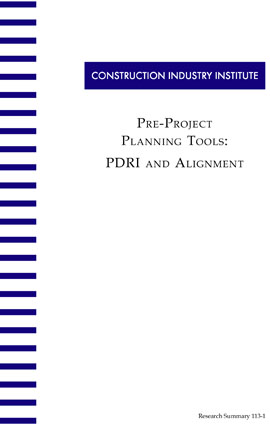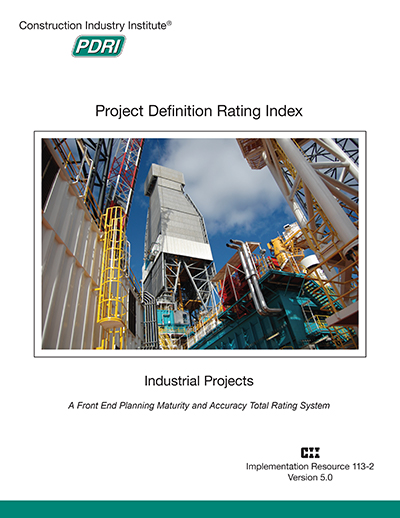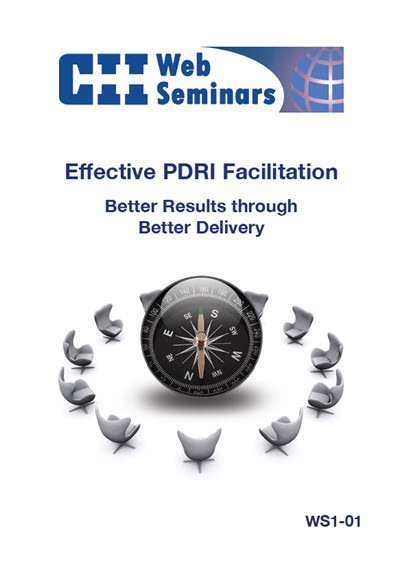
Pre-Project Planning Tools: PDRI and Alignment
Previous CII research found that tools for measuring project scope definition and assisting alignment between project participants needed to be developed. The CII Front End Planning Research Team (RT113) was formed in 1994 to produce effective, simple, and easy-to-use scope definition and alignment tools. These tools should help owners and contractors better achieve business, operational, and project objectives.
RT113 first produced the Project Definition Rating Index (PDRI), Industrial Projects (CII Implementation Resource 113-2). This book provides a method for measuring project scope development. The PDRI weighted index, based on industry best practices, allows its users to measure the level of scope definition and to compare scope definition to anticipated project success. It consists of 70 elements in a weighted checklist format. The weighted score of a project can range up to 1000 points, with a lower score being better. Based on an analysis of 40 projects, the research team found that projects scoring less than 200 (out of 1000 total points) were significantly more successful than those that scored greater than 200.
The research team also analyzed the impact of alignment between business, project management, and operations personnel of owner companies, as well as the alignment between owners and contractors. As part of the research, over 100 industry participants were interviewed and 20 capital projects evaluated in depth. This led to the identification of 10 critical alignment issues that must be addressed during pre-project planning. These 10 issues were shown to correlate positively with project success. To address these issues, the research team developed an in-process tool called the Alignment Thermometer and published Alignment During Pre-Project Planning (CII Implementation Resource 113-3). This research summary provides an overview of the scope definition and alignment research and introduces the tools and their benefits.
Project Team Alignment is the process of incorporating all of those distinct priorities and requirements into a uniform set of project objectives that meet the business needs for the proposed facility. The research identified five categories that need to be addressed effectively to achieve alignment: (RS113-1, p. 11)
- Execution processes
- Company culture
- Information
- Barriers to creating and maintaining alignment
- Tools
Achieving and maintaining alignment is critical to project success. The 10 critical alignment issues that have the greatest effect on team alignment and ultimate project success, in order of importance are:
- Stakeholders are appropriately represented on the project team.
- Project leadership is defined, effective, and accountable.
- The priority between cost, schedule, and required project features is clear.
- Communication within the team and with stakeholders is open and effective.
- Team meetings are timely and productive.
- The team culture fosters trust, honesty, and shared values.
- The pre-project planning process includes sufficient funding, schedule, and scope to meet objectives.
- The reward and recognition system promotes meeting project objectives.
- Teamwork and team building programs are effective.
- Planning tools are effectively used.
These 10 critical issues are the basis for the "Alignment Thermometer" discussed under the Implementation Tools section.
(RS113-1, p. 17)


